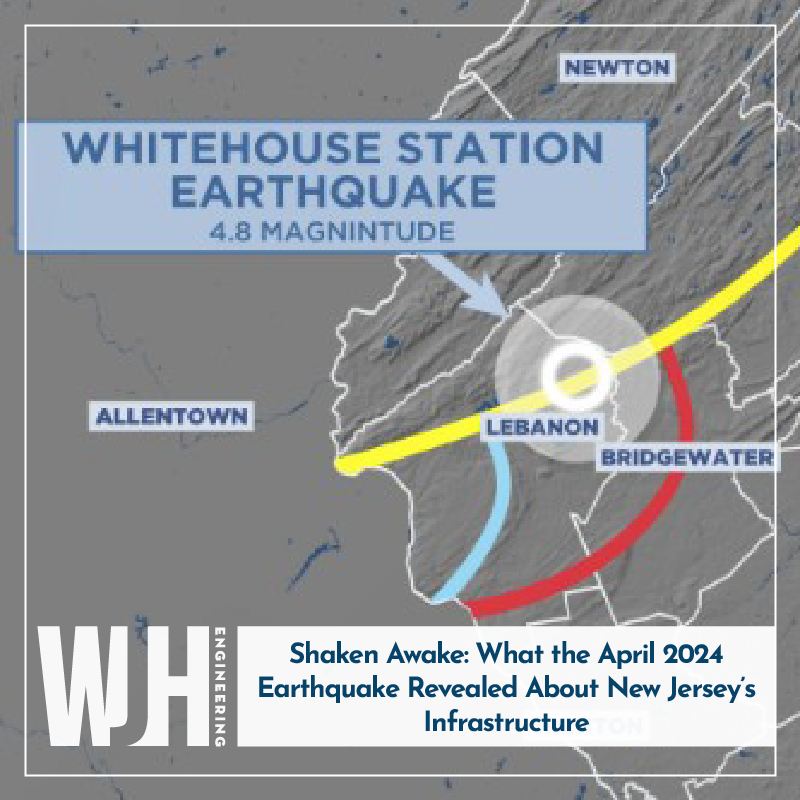In April 2024, a magnitude 4.8 earthquake struck near Whitehouse Station, NJ – the largest in the region in decades. While no catastrophic damage was reported, the tremor sparked both concern and curiosity: Just how vulnerable is our infrastructure to an event like this?
Though earthquakes are often associated with California, New Jersey sits atop a network of ancient fault systems, including the Ramapo and Flemington fault lines. These faults are less active than those along the west coast, but they are not inactive. When they do move, they remind us that our infrastructure was not built with frequent seismic activity in mind.
When the shaking stopped, many people were left wondering how our bridges, water systems, and older buildings would hold up if a stronger quake ever hit. It’s a fair question; much of our infrastructure wasn’t designed with earthquakes in mind. So even small tremors like this can highlight areas where we may need to take a closer look plan for the future.
Simple practices like regular inspections, updating emergency response plans, and making targeted upgrades to older structures can go a long way toward keeping our communities safe. From a planning and land development perspective, civil engineers in New Jersey can make a collective effort to better protect our steep slopes and embankments. Tools such as soil stabilization matting, retaining walls, and well defined drainage swales can help to stabilize areas with steep slopes.
At WJH Engineering, we’re committed to helping communities prepare for the unexpected, whether that’s through smart design, thoughtful planning, or just being part of the conversation about keeping New Jersey safe and strong.

